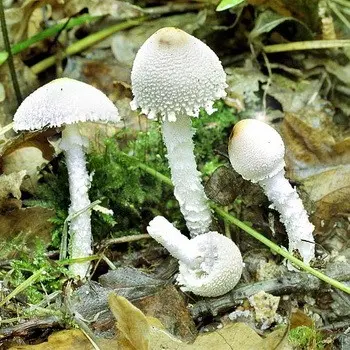 Lepiotas are inedible mushrooms of the champignon family. They are predominantly found in coniferous and mixed forests, on edges, glades and pastures. The owners of household plots note the accumulation of poisonous lepiots in their gardens and vegetable gardens from mid-summer to the end of September. The lepiot mushroom grows both singly and in groups.
Lepiotas are inedible mushrooms of the champignon family. They are predominantly found in coniferous and mixed forests, on edges, glades and pastures. The owners of household plots note the accumulation of poisonous lepiots in their gardens and vegetable gardens from mid-summer to the end of September. The lepiot mushroom grows both singly and in groups.
Below is a description and photo of poisonous lepiota of various types: chestnut, rough and comb. You can also learn about mushroom lookalikes and their uses.
Lepiota chestnut mushroom
Category: inedible.
Name chestnut lepiotas (Lepiota castanea)translated from ancient Greek as “scales”.
Hat (diameter 2-6 cm): often cracked, in young mushrooms bell-shaped or ovoid, becomes more prostrate with time. It has a small tubercle in the center, the middle is usually darker than the edges. The light skin is densely dotted with chestnut or brown scales.
Leg (height 3-7 cm): cylindrical, tapering from bottom to top, usually hollow. Young mushrooms have a small ring.
The flesh of the lepiota is very brittle, light, almost white under the skin of the cap, and brown or dark red in the stem.
Records: thin, usually white, in old mushrooms they can be yellow or light brown.
Doubles: are absent.
When growing: from early July to mid-September in Europe and Siberia.
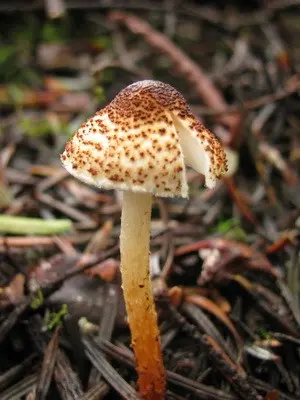
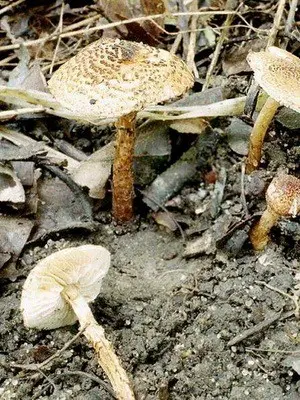
Where can I find: on soils of deciduous and mixed forests.
Eating: not used, as it contains dangerous amatoxins.
Application in traditional medicine: does not apply.
Other names: chestnut umbrella.
Poison mushroom lepiota grungy
Category: inedible.
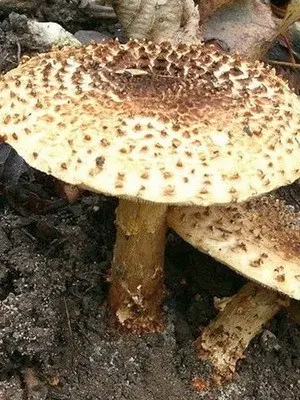
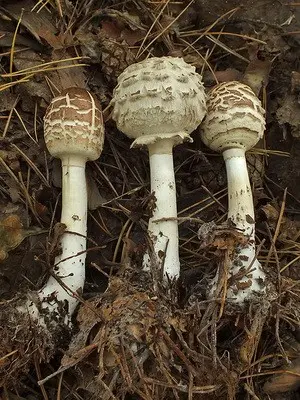
[ »»]
Rough lepiota hat (Lepiota aspera) (diameter 5-15 cm): yellow, brownish or orange, dry to the touch. In young mushrooms in the form of a small egg, over time it changes to a slightly convex one. Small cracks or scales in adult lepiotas usually disappear.
Leg (height 6-13 cm): often hollow, in the form of a cylinder, with a stable ring. Lighter than cap, rarely with small scales. Usually smooth to the touch.
Pulp: fibrous in the cap, white, darker in the stem. It has an unpleasant putrid odor and a bitter-sharp taste.
Records: frequent and irregular, white or yellowish.
Doubles: are absent.
Lepiota grows from early August to October in the northern countries of the Eurasian continent, North America and Africa.
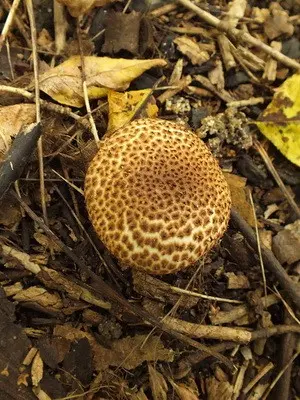
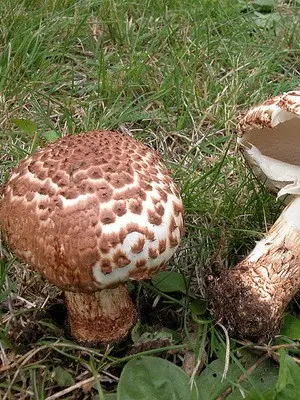
Where can I find: in mixed forests with moist and humus-rich soil. Can be found in city parks on rotten fallen leaves.
Eating: not used.
Use in traditional medicine (data are not confirmed and have not been clinically tested!): tincture is used to fight malignant tumors, especially effective in the treatment of sarcoma.
Other names: umbel sharp-scaly.
Lepiota comb venomous
Category: inedible.
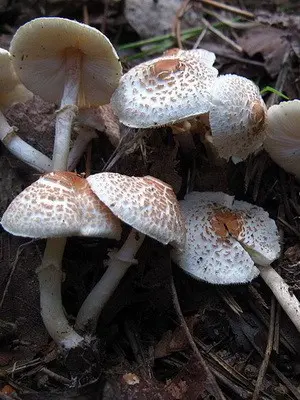
[ »wp-content/plugins/include-me/goog-left.php»]
Hat (diameter 3-7 cm): usually reddish or brown, with a central tubercle. In young mushrooms, it is bell-shaped or cone-shaped, while in old ones it is prostrate. Dry, due to which it is often covered with cracks and yellow or brownish scales.
Leg (height 3-10 cm): yellow or light cream, tapering from bottom to top, cylindrical, very thin and hollow. Young mushrooms have a white ring that disappears over time.
Pulp: fibrous, white. Very sour with an extremely unpleasant chemical smell.
Doubles: lepiota relatives lilac (Lepiota lilacea), chestnut (Lepiota castanea) and woolly shod (Lepiota clypeolaria). The lilac lepiota is extremely poisonous, has purple scales, the chestnut and woolly-shod scales on the hats are larger and darker.
Eating: not used.
Application in traditional medicine: does not apply.
The crested lepiota grows from the beginning of July to the end of September in temperate countries of the Northern Hemisphere.
Other names: umbel comb, silverfish comb.
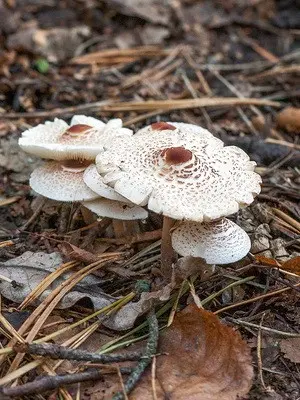

Where can I find: on soils of coniferous and mixed forests, on edges or along roads. Especially often lepiota comb grows next to pine trees.









